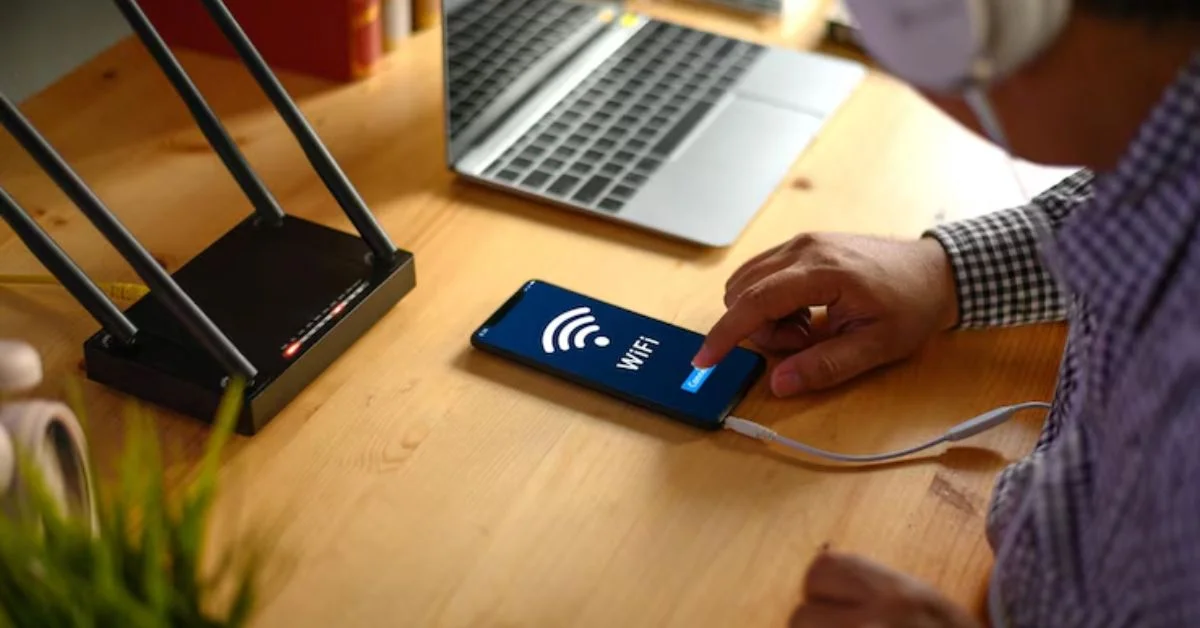In today’s world, home Wi-Fi is essential. It’s what keeps us connected to everything—from work and school to entertainment and social media. But have you ever stopped to think about how vulnerable your Wi-Fi network could be? Without proper security, your home Wi-Fi can be a gateway for unauthorized access, misuse, malware, and other threats. Whether you’re streaming shows, working from home, or simply browsing the web, your Wi-Fi network needs protection to keep you and your devices safe.
When it comes to securing your home network, there are some simple yet effective steps you can take. It’s not just about having a strong password. With the right measures in place, like upgrading to fiber optic service and taking care of a few key settings, you can significantly reduce the chances of being targeted. Let’s dive into the common risks to your Wi-Fi network and how to protect yourself.
What’s at Risk When Your Wi-Fi Isn’t Secured?
Think about how many devices in your home rely on Wi-Fi. Laptops, smartphones, tablets, smart TVs, gaming consoles, and even your smart fridge or thermostat—most of these are constantly connected to your network. While this makes life easier, it also means there are multiple points of entry for anyone looking to break in. If someone gains unauthorized access to your Wi-Fi network, they can do a lot more than just use your internet. Here’s what’s at risk:
- Unauthorized Internet Use – If someone accesses your Wi-Fi without permission, they can use your internet connection for free. This might not seem like a huge deal, but it can slow down your network, especially if the person is downloading or streaming large files.
- Personal Data Theft – If your Wi-Fi network isn’t secure, it can be easier for hackers to intercept the data being transmitted over it. This includes sensitive information like credit card numbers, login credentials, or personal messages.
- Malware Infections – A compromised Wi-Fi network can serve as a gateway for malicious software. Hackers can use your network to infect devices with viruses, spyware, or ransomware. Once infected, your devices can be used to spread the malware further or steal information.
- Privacy Risks – If your Wi-Fi isn’t protected, others can potentially access your online activity, track your browsing habits, and even spy on your communications.
How Fiber Optic Service Plays a Role in Security
Many people think that the quality of the internet connection doesn’t affect security, but that’s not entirely true. Fiber optic service offers much faster speeds and more reliable connectivity compared to traditional broadband. But more importantly, fiber connections are also harder to intercept. With fiber internet, the data travels through glass or plastic fibers, using light signals, which makes it much more difficult for hackers to eavesdrop or tap into the network.
While fiber optic service doesn’t automatically secure your home Wi-Fi network, it does help create a solid foundation for speed and reliability. And when combined with the right security practices, it can make your home network even harder to breach. It’s not just about getting faster speeds; it’s about having a more secure infrastructure that’s resistant to certain types of interference or hacking attempts.
Steps You Can Take to Protect Your Wi-Fi Network
The good news is that you don’t have to be an expert to improve your Wi-Fi security. There are simple steps you can follow to significantly reduce the risks associated with your home network. Let’s go over some practical measures that will keep your Wi-Fi safe and secure.
1. Rename Your SSID (Network Name)
The first thing you should do is rename your SSID (Service Set Identifier), which is essentially the name of your Wi-Fi network. By default, your router may come with a generic name like “Netgear” or “Linksys.” Anyone nearby can see this, and if it’s not personalized, they may try to guess the password or identify your router’s manufacturer.
Changing the SSID to something unique can help deter casual hackers. Avoid using easily identifiable names like your home address or family members’ names, as these could give attackers a clue about your password. Make it something random, but easy enough for you to remember.
2. Set a Strong Password
The next step in securing your Wi-Fi is creating a strong password. A weak password can be a major security risk. Avoid using simple passwords like “123456” or “password,” which can be easily guessed. Instead, opt for a long, complex password that includes a mix of letters (uppercase and lowercase), numbers, and special characters.
It’s also important to update your password regularly to minimize the chances of someone gaining unauthorized access over time. If you suspect your network has been compromised, change your password immediately.
3. Enable WPA3 Encryption
Wi-Fi networks use encryption protocols to protect the data being transmitted. The strongest encryption available today is WPA3 (Wi-Fi Protected Access 3). If your router supports WPA3, enable it in your router’s settings to increase security. WPA3 is more resistant to brute-force attacks and offers better protection than its predecessor, WPA2.
If your router doesn’t support WPA3, make sure you’re using WPA2 as a minimum. WEP (Wired Equivalent Privacy) is outdated and can be easily cracked, so avoid using it at all costs.
4. Update Your Router Firmware Regularly
Router manufacturers frequently release firmware updates to fix security vulnerabilities and improve performance. However, many people don’t realize that their router’s firmware may be outdated and vulnerable to cyber-attacks.
Regularly check for firmware updates through your router’s settings and install them as soon as they’re available. This ensures that your router is running with the latest security patches and can defend against the newest threats.
5. Disable Remote Management
Some routers come with remote management features, which allow you to access and control your router from outside your home network. While this feature may be convenient, it can also be a security risk if left enabled. Hackers could potentially exploit remote management features to gain access to your router settings.
If you don’t need remote management, it’s best to disable it in your router’s settings. This will add an extra layer of protection to your network.
6. Set Up a Guest Network
If you have visitors who need to use your Wi-Fi, set up a separate guest network. This ensures that your main network remains secure, even if someone tries to connect to your Wi-Fi. Guest networks are isolated from your primary devices, so even if someone on the guest network tries to access your files or data, they won’t be able to.
Conclusion: Protecting Your Home Wi-Fi Is Essential
With the growing number of connected devices in our homes, securing your Wi-Fi network has never been more important. By taking simple steps like renaming your SSID, using a strong password, enabling WPA3 encryption, and keeping your router firmware updated, you can significantly reduce the risks of unauthorized access, malware, and data theft. Adding fiber optic service to the mix gives you the speed and reliability needed to keep everything running smoothly, while also providing a more secure foundation for your home network. Protecting your Wi-Fi is not just about keeping your internet fast; it’s about keeping your entire digital life secure.
For more information, click here.









